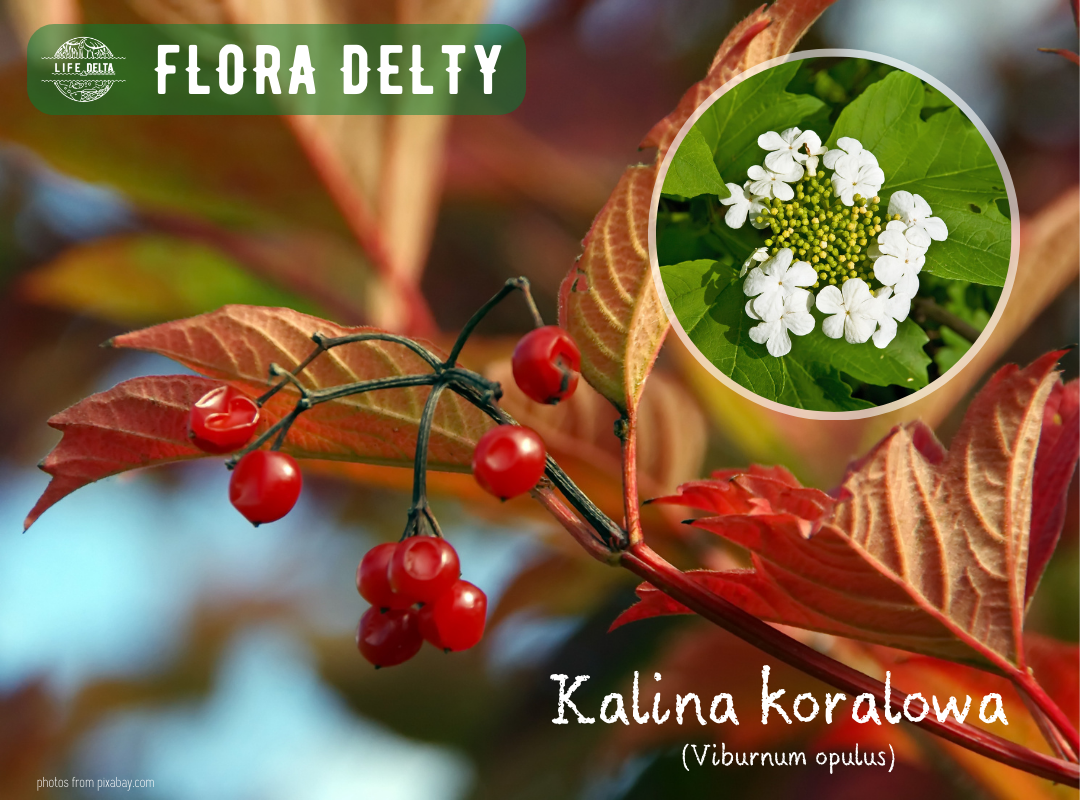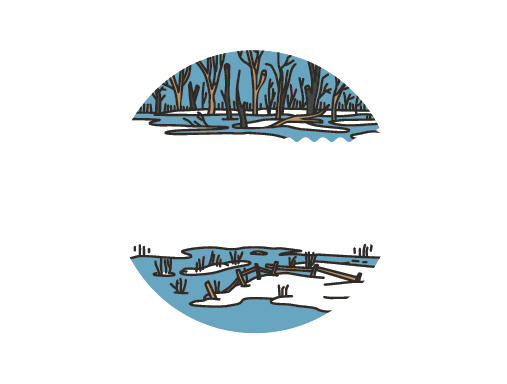
09 Mar Flora of the Delta – european cranberry bush.
European cranberry bush (Viburnum opulus) is a shrub belonging to the muskeg family, which is quite common in Poland, not found only in the higher parts of the mountains. It is mainly found in riparian forests along rivers, streams and lake shores, as well as in moist, fresh forests and thickets, both in the undergrowth and at their edges.
It is characterized by fast growth, because after 5 years it reaches about 1.5 meters in height. Usually grows up to 4 m, but in favorable conditions can measure up to 6-7 m. Small, white flowers which appear in May, situated on the tops of shoots in dense, ball-shaped clusters are the ornament of the shrub. The fruit is a scarlet red, shiny, spherical drupe. Within the yellowish flesh is a single, round and flattened seed that is red in color. The fruit ripens in August and September, then remains on the shrub for several months. When not dropping for the winter, they provide food for birds, which feed on the fruit and spread the seeds over long distances.
As many as 20 bird species eat the fruit of the cranberry bush, most often thrushes, redstarts but also whitethroats and magpies. European cranberry bush is a poisonous plant with medicinal properties: antispasmodic, anti haemorrhagic and analgesic. It is most commonly used by women (for problems and pain during pregnancy and menstruation) and is therefore sometimes called a women’s medicine. Syrups and jams made from cranberry bush, combined with honey, were also used as home remedies to soothe coughs. The poisonous properties of the fruit disappear when frozen or exposed to high temperatures.
Harvesting and processing of cranberry bush fruits is practiced especially in the former Soviet Union, where the fruits are eaten raw or in the form of compote, jelly, jellies, marmalades and tinctures. Cranberry bush is also a very decorative shrub grown as one of the ornamental plants in garden compositions. Symbolizing youth and innocence, it was also an inspiration for many poets and folk songwriters, and thus holds a special place in the traditions and culture of the Poles and Slavs.
Text: Kalina Adamczyk.




